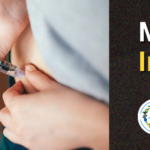What is the theory behind Iridology?
Iridology as a form of complementary and alternative medicine is a rather interesting field in which its underlying concept is that the eyes, and more specifically, the iris, are the reflection of the overall health of the body. By looking at the shape, colour, or other features that may be found on the iris, the Iridologist should be able to note the presence of diseases that are acute and chronic in nature. It has been widely adopted by holistic health practitioners who believe that every part of their body has a way of signalling what is happening elsewhere.
The Foundation of Iridology
The concept of Iridology is built on the theory that the iris, which is the coloured part of the eye, is inextricably connected to every part of the body through the nerves. Thus, various connections are understood between the iris and organs and tissues, and different regions of the iris reflect the condition of different body parts. This concept is similar to the reflexology system in which particular points on the feet and hands are associated with specific regions of the body.
Iridology has been around since the early epochs of man and other ancient cultures, where people thought that the eyes could reveal all in terms of health and personality. However, the current form of Iridology as a system did not fully evolve until the 19th century with the work of Hungarian physician Dr. Ignaz von Peczely. Dr. Peczely, after witnessing the incident of an owl in which its eye had a marking corresponding to its physical injury, began to investigate the link. His effort put into developing the Iridology Charts which are used today for Iridology where the iris is divided into zones corresponding to different body parts.
Learn more by watching our comprehensive video, “Iridology Explained“.
The Theory Behind Iridology
In Iridology, the irises are connected to the body through a complex network of nerves. These nerve pathways connect the iris to each organ and tissue in the body, thus allowing the iris to indicate changes in a person’s health. According to this theory, signals from the body to the brain are sent through the optic nerve and other visual pathways, and these signals are reflected in the iris. The iris has certain patterns, colours and markings which are said to reveal the weaknesses, inflammations or strengths of different parts of the body.
How Iridology Works
Iridology uses a tool called an iridoscope that is used to enhance the view of the iris so that the practitioner can see some details on the iris. An Iridologist may also simply use a magnifying glass and torch light to examine the patient’s eyes. They then study the observations in correspondence to the Iridology Chart that partitions the iris into various regions, which refers to distinct organs or systems. For example, the upper part of the iris is believed to be associated with the brain and head, the lower part with the kidneys and stomach.
The Iridologist looks for various signs in the iris, such as:
Patterns and Rings
Some kinds of pigmentation or markings in the iris are said to be an indication of different conditions. For instance, if there is a ring around the circumference of the iris, it can be indicative of the accumulation of toxins in the body. On the other hand, certain patterns can point out the regions of bodily weakness or stress in particular organs.
Colours
Transitions in the coloration of the iris may also be marked. Everyone is born with different colours of the iris (e.g., brown, blue, green, etc.) and although this is perfectly normal, Iridologists have found that any discoloration or change in the colour of the iris can be an indication of a certain ailment. For instance, if one has a yellowish tint, then it may result from liver issues, and if one has dark spots, then he or she is likely to have a genetic predisposition to certain diseases.
Fibres
As for the elements that structure the fibres inside the iris, which look like veins spreading from the pupil, the texture of the fibres is another major concern. Compact and straight fibres are considered indicators of good health and a strong constitution, whereas relaxed and wavy fibres may indicate the possibility of weakness or imbalance in a particular part of the body.
Have you ever wondered What Is Iridology and How Does It Work? Watch and learn from our insightful video.
Iridology in Holistic Health
As with many other complementary health approaches, Iridology is another non-invasive practice that people can use when it comes to holistic health. As opposed to most diagnostic tests that necessitate blood tests, scans, and/or surgical procedures, Iridology provides a noninvasive means of obtaining information about a person’s condition. This makes it particularly appealing to those looking for gentler and more natural forms of healthcare.
There are many additional complementary approaches to Iridology, including nutritional, herbal, and lifestyle interventions. For instance, an Iridologist may recognize specific patterns indicating digestive tension and advise the patient to change what they eat, take certain supplements, or practice techniques to decrease stress. This is in line with the holistic philosophy of care which believes that a patient should be treated as a whole person and not just a body in distress.
Case Studies and Testimonials
Iridology has also received support from practitioners and patients with many of them offering their testimonies on how it has helped them. There are many examples of people whose certain diseases have been detected through Iridology even before the onset of their clinical symptoms. For example, some of the patients have pointed out that they went through Iridology consultations and were informed that there were some imbalances in their body. The insights learned from an Iridology consultation could help patients take preventive measures to hinder further development and progression of a disease.
Watch our informative video to learn more about, “What is the theory behind Iridology?”
Conclusion
Iridology’s appeal is credited to its holistic approach and non-invasive nature. By viewing the body as an interconnected system and utilising the iris as a reflective map of overall health, Iridology offers a unique perspective on wellness. Whether used as a complementary tool alongside other holistic practices or as a standalone method, Iridology continues to resonate with those seeking alternative paths to understanding and improving their health.
Discover the secrets of Iridology with our comprehensive, free guidebook, “Benefits of Having an Iridology Consultation”. This invaluable resource offers detailed insights into the art and science of Iridology, helping you understand how we assess and improve your health through the patterns and colours of the iris. Don’t miss this opportunity to enhance your knowledge and take control of your health—download your free copy today!
Are you ready to make the first move towards improving your health and wellbeing? Take advantage of a complimentary consultation with our wellness clinic and learn how our integrated health services can benefit you. In this call, we’ll talk about your particular situation, address any concerns, and devise a strategy that best suits your situation. Here you have a unique opportunity to communicate with our experts who are focused on your health and fitness goals. Don’t wait, it’s time to take control of your health, schedule your free discovery call now!
To learn more about Iridology, check out our other related blogs:
What Your Eyes Reveal About Your Health
How Is Iridology Used With Holistic Health?
What Is Iridology and Sclerology?
Why You Should Have An Iridology Experience
Iridology and Emotional Health
NEXT STEPS
Book in a complimentary 15 minutes Zoom call with us (valued at £99) to enable us to clarify questions you may have on a specific health concern.




